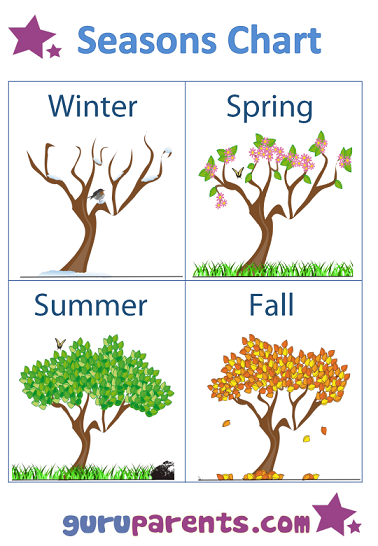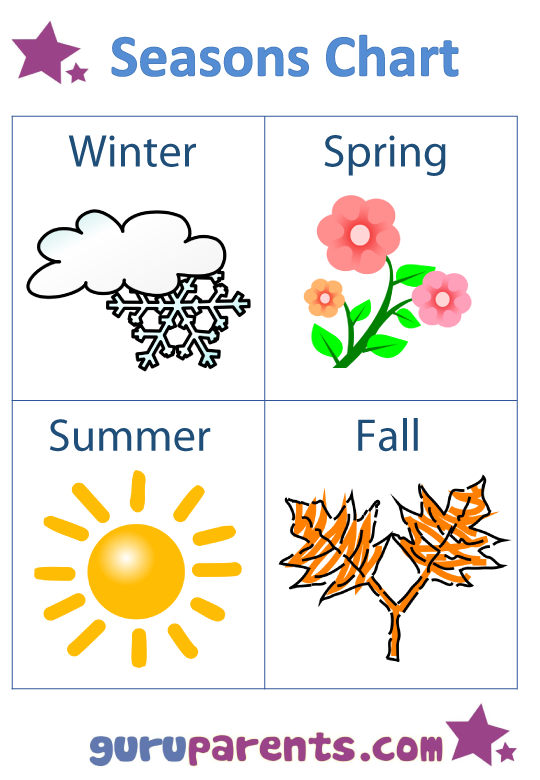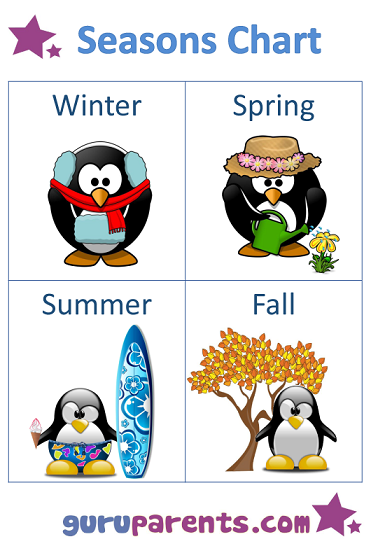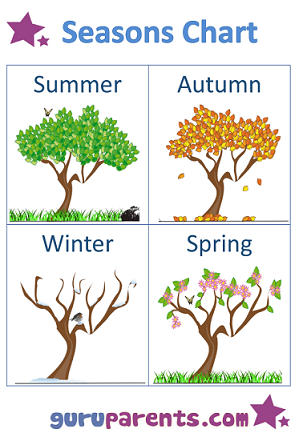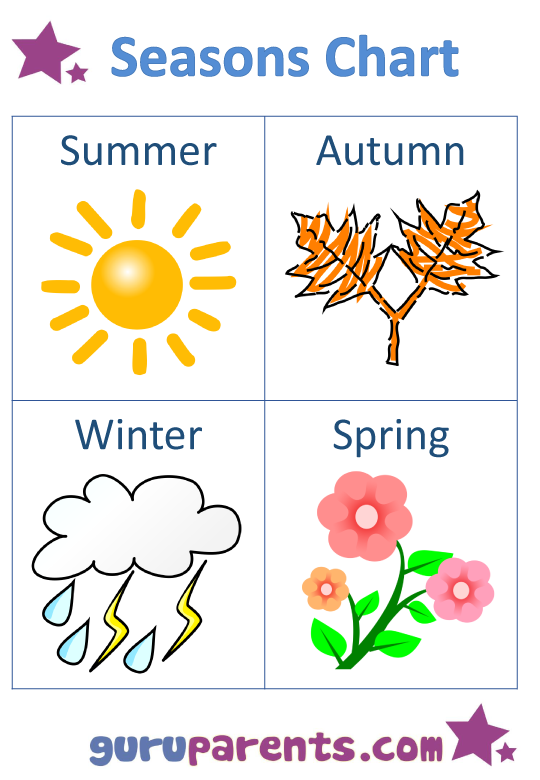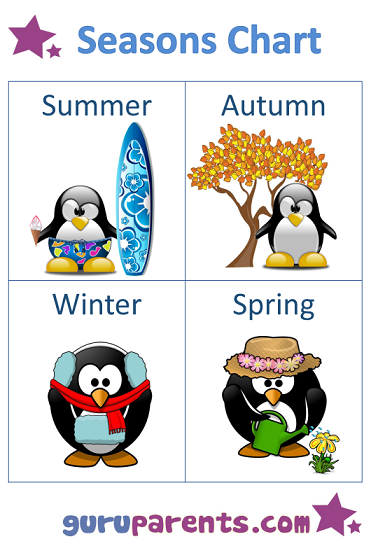As your child begins to understand the weather and the types of outdoor conditions that occur day to day, then you might like to introduce the seasons! Our seasons charts are simple, bright, and customized for each hemisphere.
Free, printable Seasons Charts
Northern Hemisphere Seasons Charts – If the leaves fall in "Fall" and your Christmas is in Winter, then these charts are for you.
Southern Hemisphere Seasons Charts – If Autumn is when the leaves fall and you enjoy a warmer Christmas, then these charts are for you.
Our seasons charts feature various images for you to choose, depending on your child, and how you would like to describe the difference in seasons.
To illustrate how the weather changes one constant, you might like the Trees chart.
The second chart is great for describing the type of weather, with great visual clues for the unique changes that occur each season.
Our last chart features a cute penguin who changes dress/task according to the season.
Check out our Seasons Worksheets for more activities for learning about the seasons!
Seasons Chart Quick Tips
1. Start by going through each season and describing the type of weather or changes that occur.
For example, ‘In Spring, the weather starts to warm up – flowers and trees start to bloom. In Summer, the weather is hot and people like to cool down by going for a swim at the beach. In Autumn/Fall, the weather starts to get cooler and the leaves on the trees change color and fall to the ground. Winter is a season that is very cold and in some places it even snows!’
Your challenge here is to express that the weather is typical of each season, because within each season, there are many types of weather. For example, it is MAINLY hot and sunny in summer, but you may get some cooler days and even rain!
2. Ask your child some of the things that they might do or wear in each season. For example – ‘In Winter, we wear coats and gloves. What do we wear in summer?’
3. If your child is ready, you might like to sound out the words. After a little practice, you can cover the picture so your child reads the word without any visual clues.

